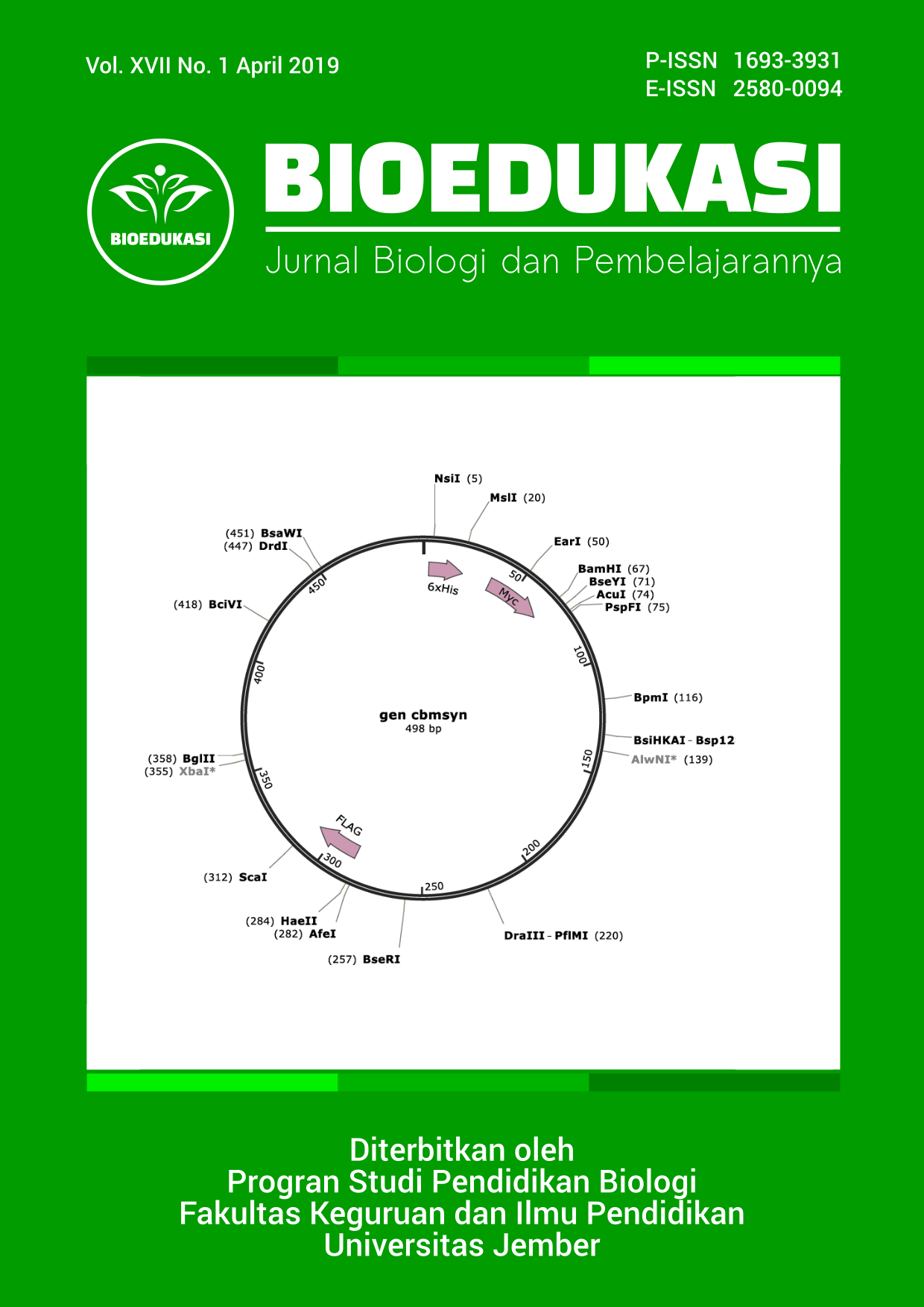Bioinformatics Analysis to Construct Cellulose-binding Module Synthetic Gene and Design Primer
Abstract
Cellulose-binding module (CBM) is a protein domain commonly found in various types of cellulase enzymes. The function of this CBM can be used for the binding process and the immobilization of a protein in the cellulose matrix. CBM can be obtained from several organisms, one of them is Trichoderma reesei. To get a gene, it does not have to be isolated from the original organism. Gene sequences can be obtained synthetically through bioinformatics analysis in accordance with the same gene sequences as those at Gene Bank. Bioinformatics analysis can be used to find new gene sequences or existing genes. This study aims to get a cbmsyn synthetic gene quickly and efficiently without reducing protein activity, which can then be ligated with other genes so that it functions as an immobilized enzyme. From the results of bioinformatics analysis, obtained DNA sequences measuring around 498 pb with 166 amino acid protein lengths. The sequence was modified by adding several restriction sites, namely BamHI, AfeI, and ScaI. The DNA sequences obtained were optimized with the Pichia pastoris codon.

This work is licensed under a Creative Commons Attribution-NonCommercial-NoDerivatives 4.0 International License.









 https://orcid.org/0000-0003-1920-0515
https://orcid.org/0000-0003-1920-0515
